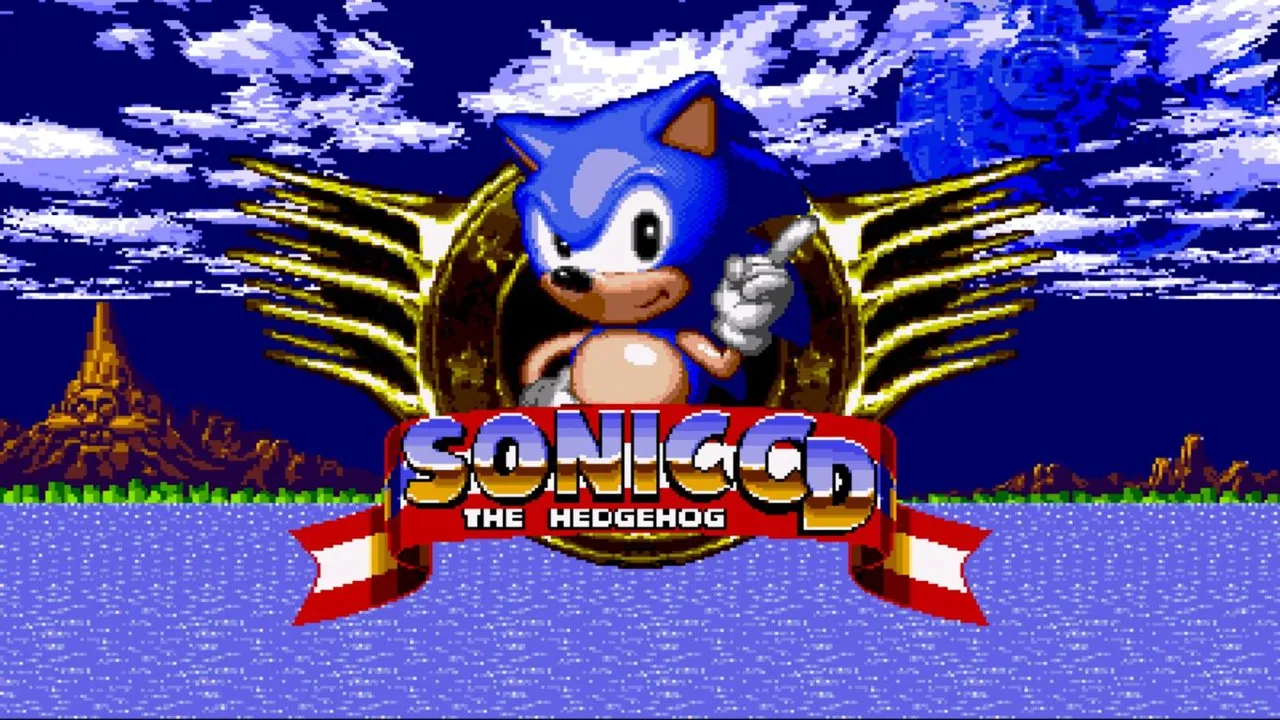
This post is avaliable in both English and Spanish (translation with DeepL). All screenshots were captured by myself.
Este post está disponible en Inglés y Español (traducción con DeepL). Todas las fotos capturadas por mí.
English
The classic Sonic games are often regarded as some of the best of the franchise as they not only set the base for everything to come, but also still hold up today because of the emphasis on simple yet rewarding gameplay of using the physics for speed and platforming. While these are often named as a trilogy, there's an entry that would be an alternative sequel to the first Sonic the Hedgehog, as it was developed in Japan while SEGA of America developed Sonic 2. This would be Sonic The Hedgehog CD, originally released for the ill-fated Mega CD addon in 1993.
It was ported to Windows 95 some few years later and then said version got ported to Gamecube and Playstation 2 in Sonic Gems Collection. Those were the only ways to play the game (excluding the obvious emulation option) until it got remade in 2011 with the help of Taxman and Stealth, which had made a polished fangame engine years ago that got them hired by SEGA to work for mobile remake of Sonic 1 and 2 to then work on this remake. For the sake of convenience, this review will be based off this port.
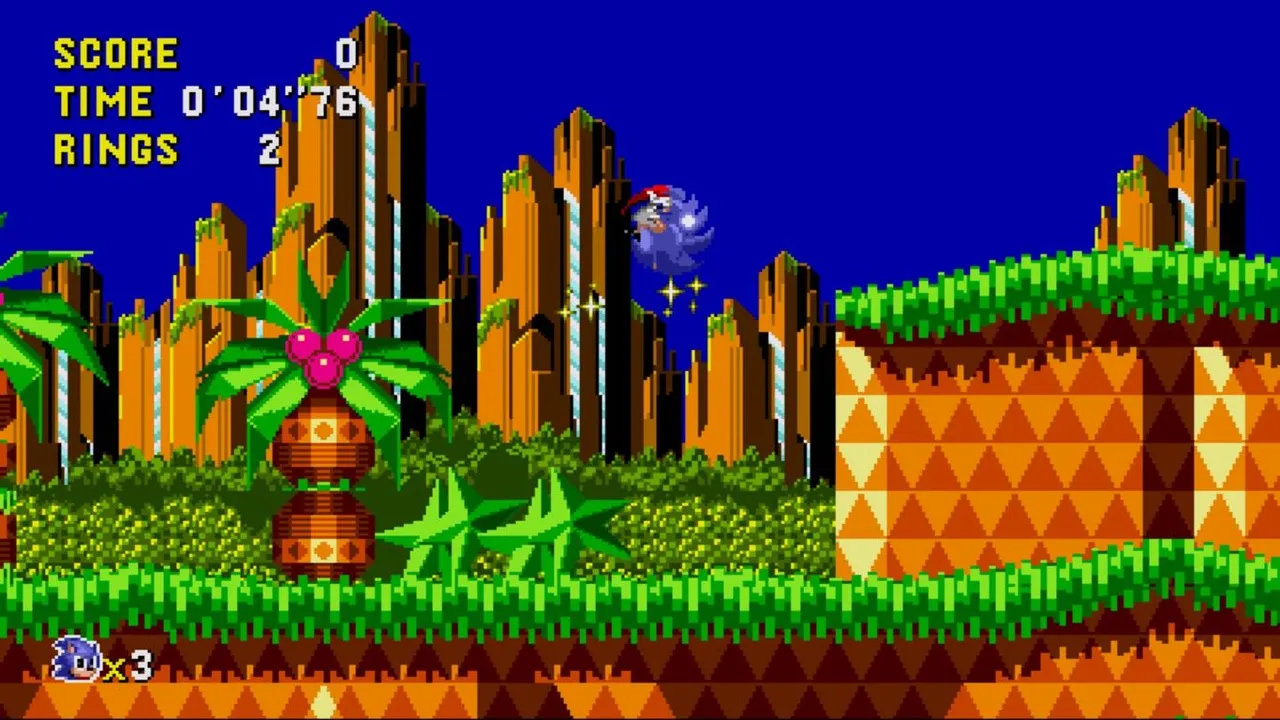
The premise and gameplay is the usual Sonic fare but with a little extra: There are Past/Future signposts that you can activate to travel in time, but you have to run for enough time without stopping to trigger the time travel (if the signpost indicator is flashing but you get stopped by any reason, you lose the chance until you hit another one).
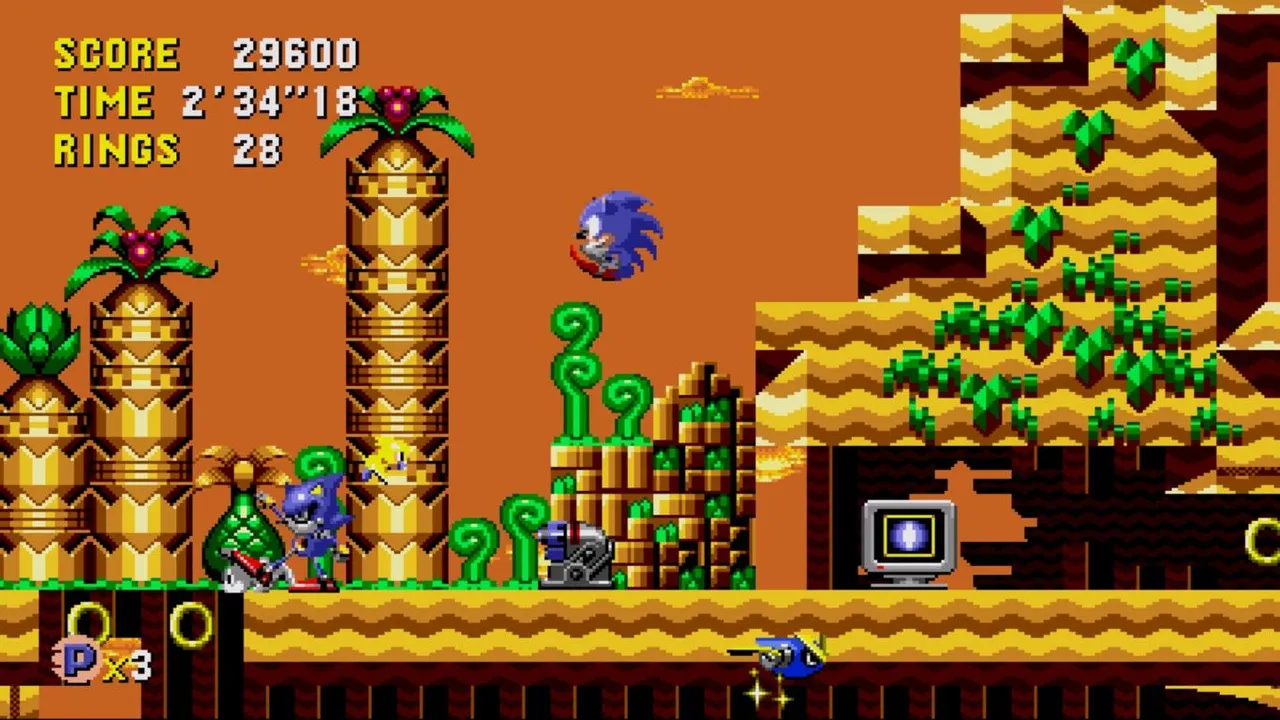
In every stage in the past, you can find a big blue machine that once destroyed, causes the zone act's future to be "Good" instead of "Bad" (which you notice by the "MADE A GOOD FUTURE" when completing the level, but you can see it as well if you travel to present and then future in that level). Getting a Good Future in both acts makes the third act (which is dedicated to a boss) be in the Good Future instead of Bad Future as well.
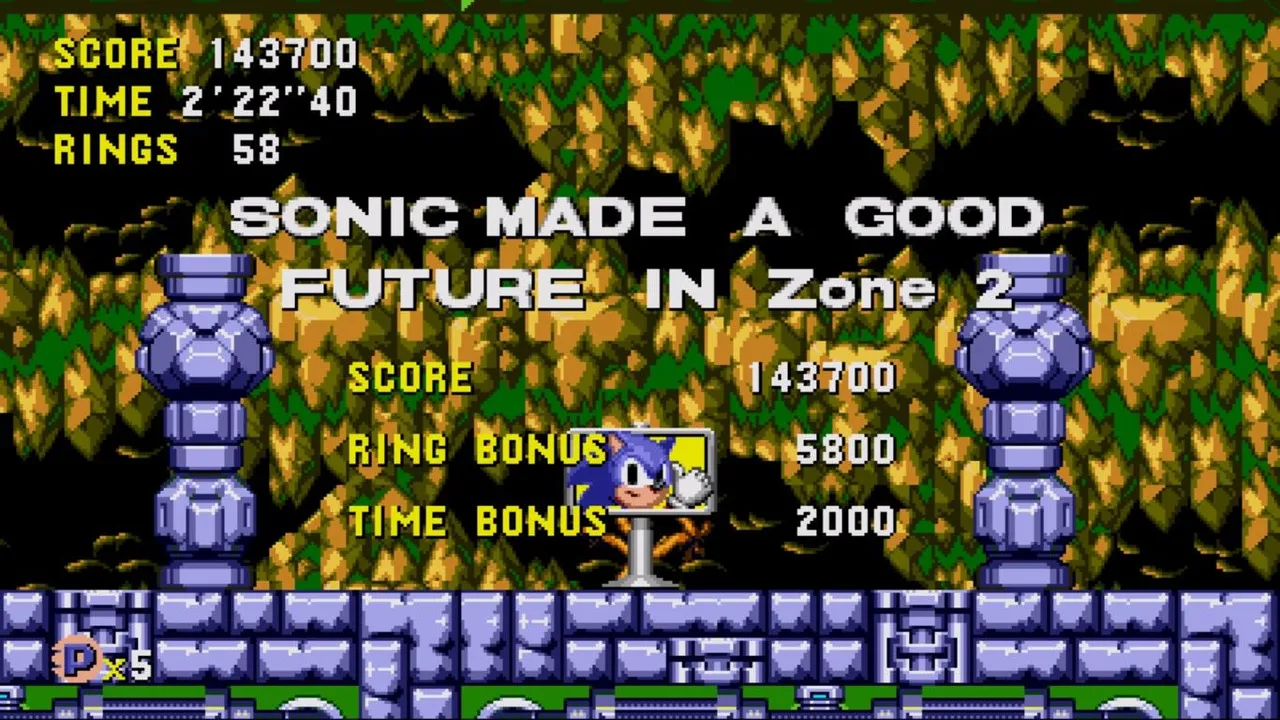
The time travel gimmick is certainly interesting (and was first considered for Sonic 2 but scrapped due to time constraints) but not perfect either, as the level design can sometimes make the time jump process harder than usual and finding the machines in the Past can be confusing as well. Can give some interesting replayability to find and destroy all of these but is understandable to skip this in normal playthroughs due to the complexity of said task. While one way to get the good ending is to get a Good Future in all zones up to the end, another is to get all 7 Time Stones in special stages, which you can find at the end of an act having 50 or more rings (on a giant ring, like in Sonic 1).
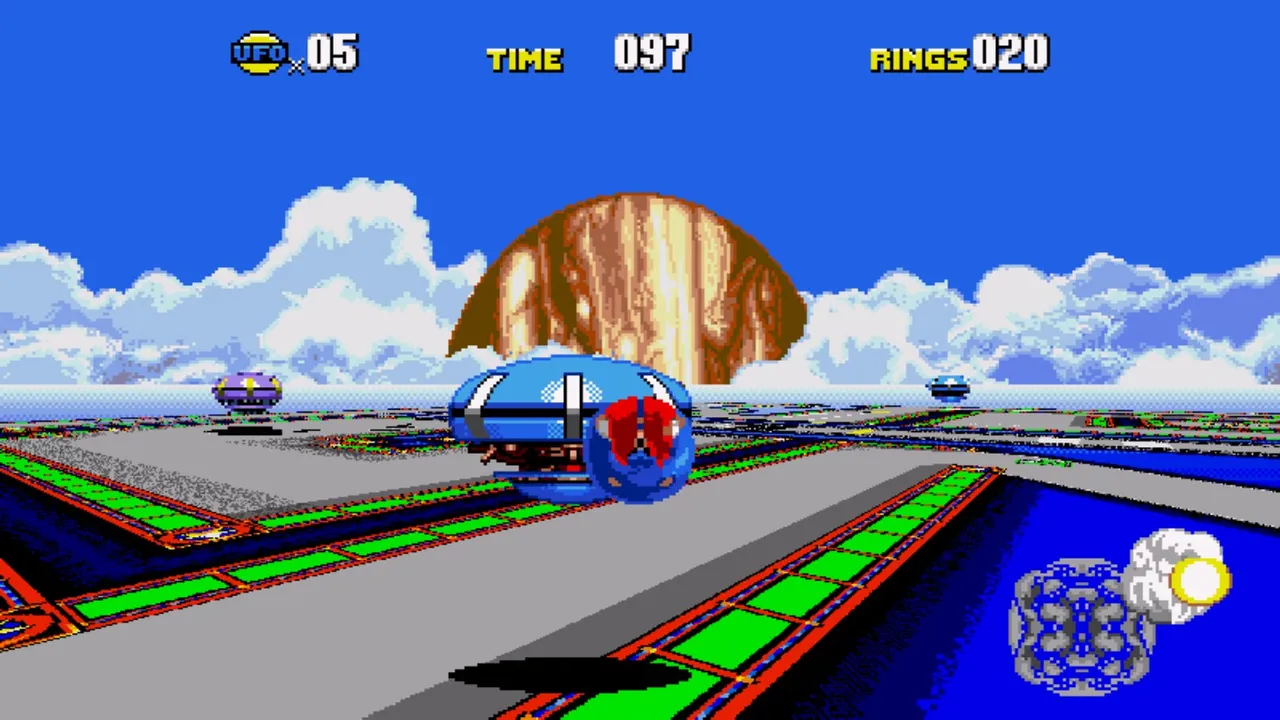
The special stages are interesting as they are sort of in 3D and have to hit all UFOs while avoiding water as it takes away your time remaining, and looks like a Mode 7 game on the SNES (Super Mario Kart and F-Zero, for example). A fun fact is that the 2011 port has these running in 60fps, but all ports before this one ran it at a rougher framerate. Also, if you make the total time on the Time Attack mode on all stages be below a set amount of time, you'll unlock the special stages to play in Time Attack, where water doesn't give any penalty and you have to clear the stage as quickly as possible.

Stages have a quite interesting amount of visual flair and uniqueness in their themes, though the backgrounds might feel crowded or overdetailed. The level design is also quite experimental with the gimmicks and not feeling too linear with the progress, though it has a mixed reception from players. The spindash in this game also used to be a bit different to most games in that you had to hold down and press jump once then let go, but the Sonic 2 spindash can be re-enabled in the 2011 port. There's also the Super Peel-Out which is used by holding up, pressing jump and then letting go of up; it looks faster, but it can be dangerous if you don't roll after using it as you can crash with an enemy.

Just as odd as the level design and visual quirks, the game is known to have two different soundtracks, the original one used in the Japanese and European versions, and a new soundtrack composed by Spencer Nielsen for the American version. While the tone between both is quite different (JP/EU soundtrack being quite energetic and funky, while the US soundtrack being unique with more ambiental tracks and an unexplainably disturbing boss theme; which is funnily unfitting as bosses here are easy), both have pretty neat tracks and the 2011 re-release lets you pick between both soundtracks (I often use the JP OST).
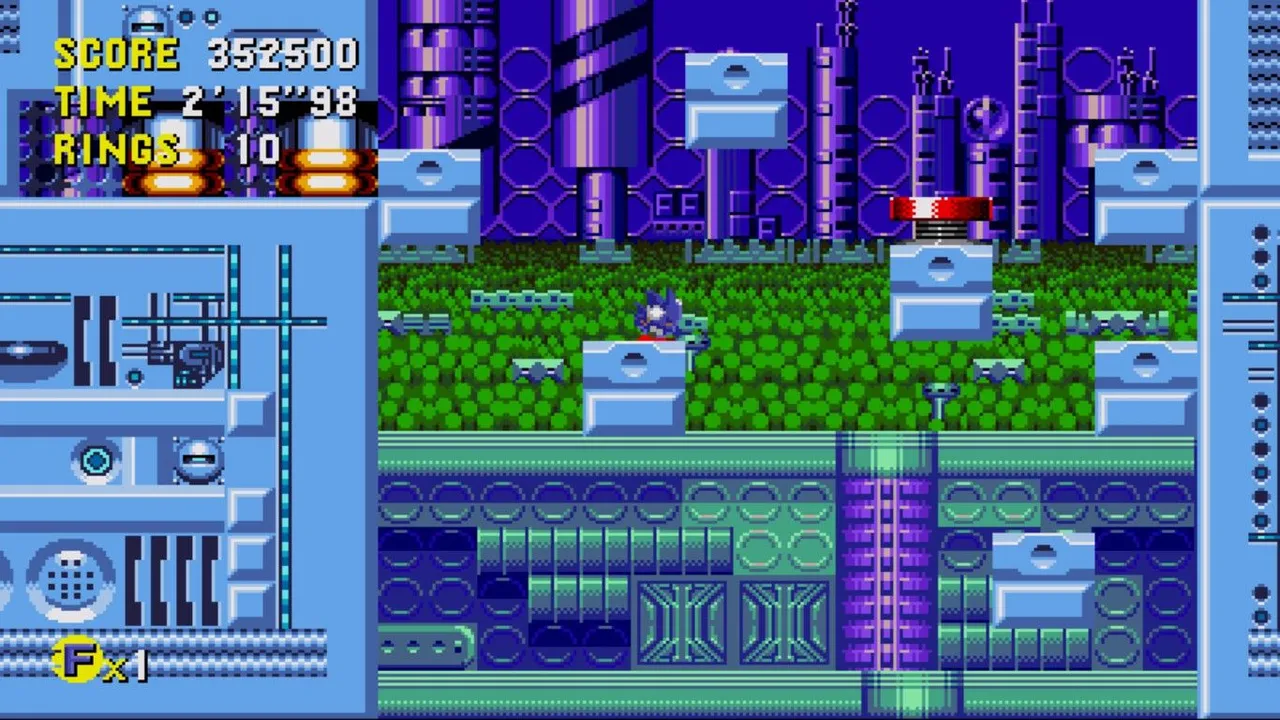
Sonic CD has a quite unique presentation with the colorful visuals with gimmicky levels, two unique soundtracks, and animated opening/ending movies produced by Toei Animation. One sad omission is that due to licensing issues, the Japanese songs for these movies are instrumental in the 2011 port (the US tracks are intact), but you can listen the vocal tracks on Youtube or even restore the movies with lyrics with a small mod.
It can be a fun ride to play through (with extra challenge if you're looking for all Time Stones), and as it is an old game re-release, sales for this game can make it pretty cheap to get.
Español
Los juegos clásicos de Sonic suelen ser considerados como algunos de los mejores de la franquicia, ya que no sólo sentaron las bases de todo lo que vendría después, sino que además siguen vigentes hoy en día por el énfasis en una jugabilidad sencilla pero gratificante de usar la física para la velocidad y las plataformas. Aunque a menudo se les denomina trilogía, hay una entrada que sería una secuela alternativa al primer Sonic the Hedgehog, ya que se desarrolló en Japón mientras SEGA of America desarrollaba Sonic 2. Se trata de Sonic The Hedgehog CD, lanzado originalmente para el malogrado Mega CD en 1993.
Fue portado a Windows 95 unos años después y luego dicha versión fue portada a Gamecube y Playstation 2 en Sonic Gems Collection. Esas fueron las únicas formas de jugar al juego (excluyendo la opción obvia de la emulación) hasta que se rehizo en 2011 con la ayuda de Taxman y Stealth, que habían hecho un motor de fangame pulido años atrás que les hizo ser contratados por SEGA para trabajar en el remake de Sonic 1 y 2 para móviles para luego trabajar en este remake. Por comodidad, esta reseña se basará en este port.

La premisa y la jugabilidad son las habituales de Sonic, pero con un pequeño extra: Hay postes indicadores del pasado/futuro que puedes activar para viajar en el tiempo, pero tienes que correr durante el tiempo suficiente sin detenerte para activar el viaje en el tiempo (si el indicador del poste indicador parpadea pero te detienes por cualquier motivo, pierdes la oportunidad hasta que golpees otro).

En cada etapa del pasado, puedes encontrar una gran máquina azul que una vez destruida, hace que el futuro del acto de la zona sea "Bueno" en lugar de "Malo" (lo cual se nota por el "MADE A GOOD FUTURE" al completar el nivel, pero también puedes verlo si viajas al presente y luego al futuro en ese nivel). Conseguir un Futuro Bueno en ambos actos hace que el tercer acto (que está dedicado a un jefe) esté en el Futuro Bueno en vez de en el Futuro Malo también.

El truco de los viajes en el tiempo es ciertamente interesante (y se consideró por primera vez para Sonic 2, pero se desechó por falta de tiempo), pero tampoco es perfecto, ya que el diseño de los niveles a veces puede hacer que el proceso de salto en el tiempo sea más difícil de lo habitual y encontrar las máquinas en el Pasado también puede ser confuso. Puede dar cierta rejugabilidad interesante encontrarlas y destruirlas todas, pero es comprensible que se salte esto en las partidas normales debido a la complejidad de dicha tarea. Mientras que una forma de conseguir el final bueno es conseguir un Buen Futuro en todas las zonas hasta el final, otra es conseguir las 7 Piedras del Tiempo en fases especiales, que puedes encontrar al final de un acto teniendo 50 o más anillos (en un anillo gigante, como en Sonic 1).

Las fases especiales son interesantes, ya que son una especie de 3D y hay que golpear a todos los ovnis mientras se evita el agua, ya que te quita el tiempo restante, y parece un juego del Modo 7 en la SNES (Super Mario Kart y F-Zero, por ejemplo). Un dato curioso es que el port de 2011 los tiene funcionando a 60fps, pero todos los ports anteriores a este lo ejecutaban a un framerate más duro. Además, si consigues que el tiempo total en el modo Time Attack en todas las fases esté por debajo de una cantidad de tiempo determinada, desbloquearás las fases especiales para jugar en Time Attack, en las que el agua no da ninguna penalización y tienes que despejar la fase lo más rápido posible.

Los escenarios tienen una cantidad bastante interesante de estilo visual y singularidad en sus temas, aunque los fondos pueden parecer abarrotados o demasiado detallados. El diseño de los niveles también es bastante experimental con los trucos y no se siente demasiado lineal con el progreso, aunque tiene una recepción mixta de los jugadores. El spindash en este juego también solía ser un poco diferente al de la mayoría de los juegos, ya que tenías que mantener pulsado y presionar el salto una vez y luego soltarlo, pero el spindash de Sonic 2 se puede volver a activar en el puerto de 2011. También está el Super Peel-Out, que se utiliza manteniendo pulsado arriba, pulsando salto y luego soltando arriba; parece más rápido, pero puede ser peligroso si no ruedas después de usarlo, ya que puedes chocar con un enemigo.

Al igual que el diseño de los niveles y las peculiaridades visuales, se sabe que el juego tiene dos bandas sonoras diferentes, la original utilizada en las versiones japonesa y europea, y una nueva banda sonora compuesta por Spencer Nielsen para la versión americana. Aunque el tono de ambas es bastante diferente (la banda sonora de JP/EU es bastante enérgica y funky, mientras que la de EE.UU. es única, con temas más ambientales y un tema de jefe inexplicablemente perturbador; lo cual es curiosamente inadecuado, ya que los jefes aquí son fáciles), ambas tienen temas bastante buenos y la reedición de 2011 te permite elegir entre ambas bandas sonoras (yo suelo usar la BSO de JP).

Sonic CD tiene una presentación bastante única con los coloridos efectos visuales con niveles artificiales, dos bandas sonoras únicas y películas animadas de apertura y final producidas por Toei Animation. Una triste omisión es que, debido a problemas de licencias, las canciones japonesas de estas películas son instrumentales en el port de 2011 (las pistas estadounidenses están intactas), pero puedes escuchar las pistas vocales en Youtube o incluso restaurar las películas con letras con un pequeño mod.
Puede ser un juego divertido de jugar (con un reto extra si buscas todas las Time Stones), y al ser una reedición de un juego antiguo, las ventas de este juego pueden hacer que sea bastante barato de conseguir.
